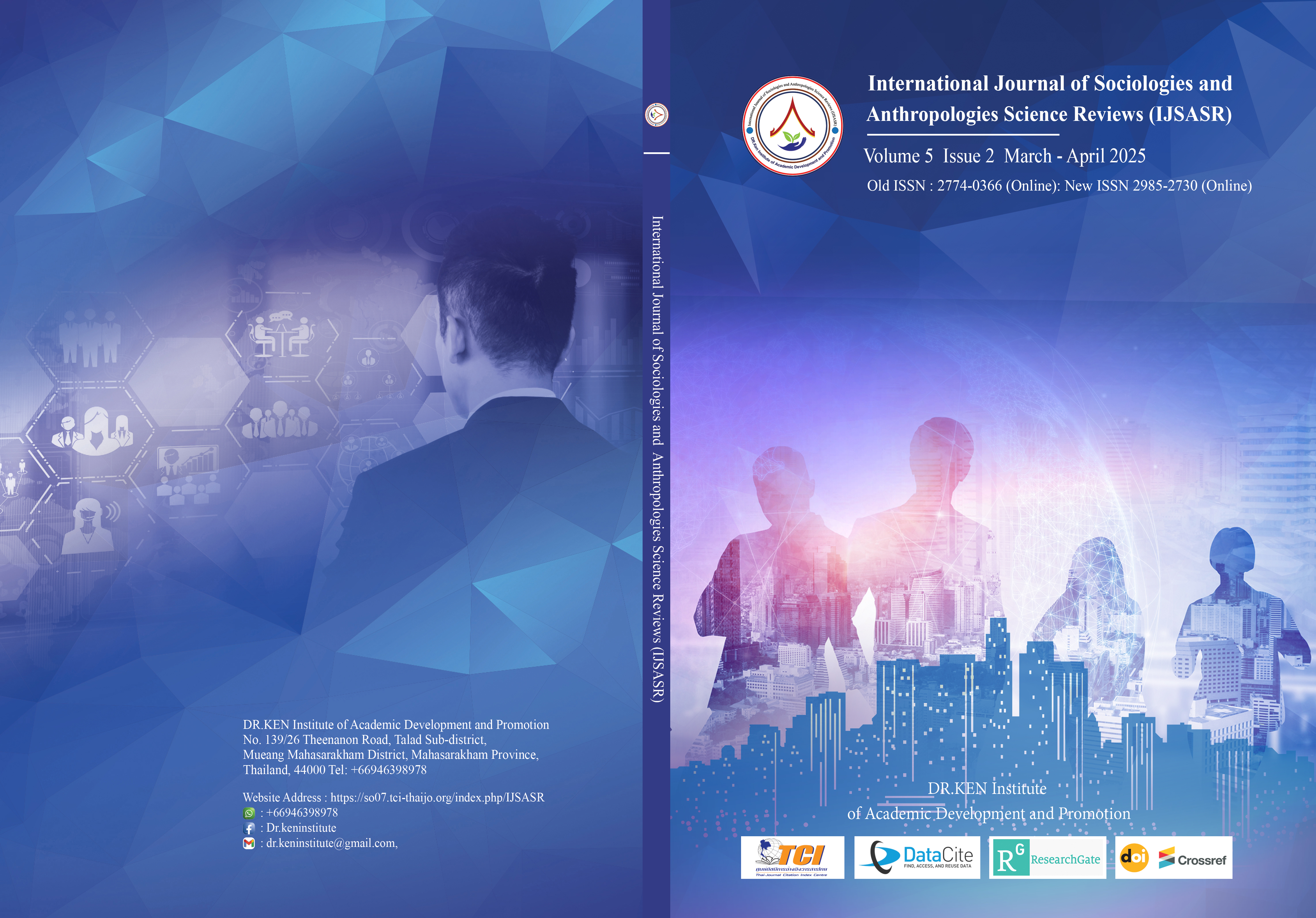A Development of Indicators and Physical Health Evaluation System for University Students in Guangzhou City
Main Article Content
Abstract
Background and Aim: The "Student Physical Health Standards" jointly formulated by the Ministry of Education and the State Sports General Administration have been officially implemented in all types of schools at all levels across the country. These tests have some drawbacks: The test method is single; Neglecting individual differences; Physical health tests and scholarships, linked to physical education scores, even lead to graduation failure, causing stress and anxiety; it neglects the cultivation of students' healthy lifestyles, emotional attitudes, and values. It is an important foundation for college education and the physical and mental health of the whole people to achieve new guarantees for the physical health test of college students in Guangzhou. This study is a survey study whose main purpose is to construct a physical health testing system for college students in Guangzhou.
Materials and Methods: This study is survey development research. Through a survey of no sport’s major university students from five universities in Guangzhou (Guangzhou University, Guangdong University of Traditional Chinese Medicine, Guangdong University of Foreign Studies, Guangdong University of Technology, and South China University of Technology). 5 experts were interviewed, 7 members of the expert focus group discussed, and 19 Delphi experts conducted two rounds of validation. The Delphi technique and the Analytic Hierarchy Process were combined to calculate indicator weights using a qualitative and quantitative approach. In the Delphi expert correspondence, the importance scores of indicators are scored using the Likert 5-point scale, and the Analytic Hierarchy Process uses the difference in the average importance scores of each indicator to determine the Saaty scale value.
Results: Based on the TPB theory, the development of indicators and a physical health evaluation system for university students in Guangzhou City was constructed. The first level indicators, including physical shape, physical function, and psychological and behavioral health, were unanimously confirmed by 9 expert appraisal team members. There are 13 secondary indicators, including BMI value, body fat content, body shape, lung capacity, pull-ups, sit-ups, 50m, 800m, 1000m, standing long jump, skipping rope, sitting forward bend, and campus health running body shape.
Conclusion: The evaluation system of the physical health tests of college students in Guangzhou is confirmed by TPB theory to be a total of 30 three-level indicators. There are 3 primary indexes, which are physical quality, mental health, and health behavior management. There are 10 secondary indexes, which are body shape, body function, athletic ability, physical quality, etc. Tertiary indicators are 30, respectively, height, weight, BMI, cardiopulmonary function, and so on.
Article Details

This work is licensed under a Creative Commons Attribution-NonCommercial-NoDerivatives 4.0 International License.
Copyright on any article in the International Journal of Sociologies and Anthropologies Science Reviews is retained by the author(s) under the under the Creative Commons Attribution-NonCommercial-NoDerivatives 4.0 International License. Permission to use text, content, images, etc. of publication. Any user to read, download, copy, distribute, print, search, or link to the full texts of articles, crawl them for indexing, pass them as data to software, or use them for any other lawful purpose. But do not use it for commercial use or with the intent to benefit any business.

References
Deng, T. (2020). Correlation between college students' psychological stress and coping strategies in physical health testing. Literature Guide of Sports Science and Technology, 26(9), 204-205.
Folkman, S. (1984). Personal control and stress and coping processes: A theoretical analysis. Journal of Personality and Social Psychology. 46(4),839-852.
Hu, Y.Y. (2018). Literature review on students' physical health development. Sporting Goods and Technology, 2(7), 160-168.
Li, S., Zhang, Y.F., & Sheng L. (2016). The influence of the Physical function index on physical health and its geographical distribution. Physical Education and Science, 6, 8-12.
Li, Z. (2012). The relationship between BMI and physical health indicators and self-efficacy of university students. Sports Science and Technology, 33, 96-100.
Lu, Z. (2022). Sports Literacy Education: A review of school sports under the concept of integration of sports and education. The 12th National Sports Science Conference paper abstract compilation - Special report (School Sports Branch).
Shang, L. (2022). Empirical study on the application of the empowerment sports model in physical education teaching. Journal of Nanjing Normal University (Natural Science Edition), 45, 142-148.
Wang, B. (2017). Policy failure under multiple logics: a sociological analysis of students' physical health test. Journal of Guilin Institute of Aerospace Technology, 22(3), 5-12.
Wang, S. (2020). Study on the correlation between physical health and mental health of university students. Sports Style. 2, 1-10.
Wang, Y., & Yang, M. (2019). Standardized management and quality control elements for physical health testing. Sports Science Research. 2, 4-12.
Yu, Z.T., Zi, B., & Wu, H.L. (2023). A study on the status quo of physical health, mental health, social adaptability, and Spearman grade correlation of students in higher vocational colleges. Sports Perspectives. 12, 7-11.
Zhang, X. (2020). The promoting effect of campus health running on the physical health of university students. Journal of Shangluo University, 34 (4), 6-14.
Zhu, C.Q., & Dong, B.L. (2016). Personality traits and exercise motivation of university students: The mediating effect of emotional regulation style. Journal of Wuhan Physical Education University, 50(1), 7-14.






